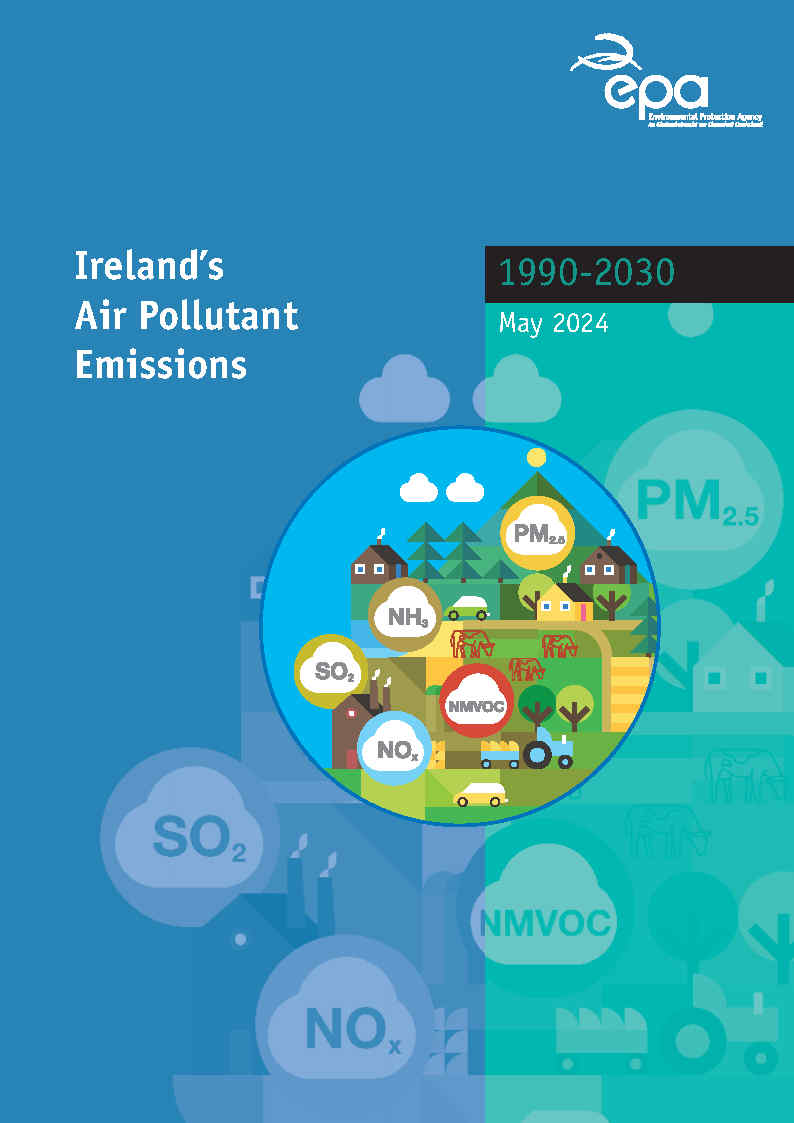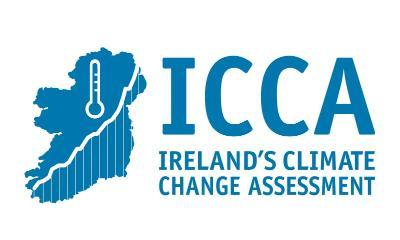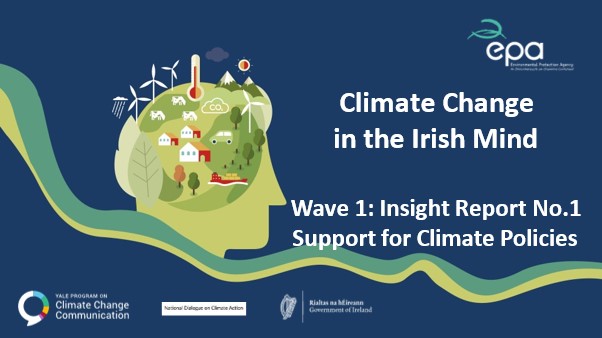
Year: 2024
The EPA has produced provisional estimates of greenhouse gas emissions for the time period 1990-2023. This report provides early insight into the annual greenhouse gas emissions in advance of final data being submitted to the EU and UN in 2025.
Year: 2024
EPA special topic bulletin on Greenhouse Gas Emissions and Removals from Land Use, Land Use Change and Forestry (LULUCF) as part of a special topic series examining sectoral and cross-cutting climate issues. This bulletin provides an insight into the history of land use in Ireland and looks in detail at the six land use categories relevant to GHG emissions reporting. It also sheds light on Ireland’s LULUCF emissions reduction targets and on updates and revisions to the LULUCF GHG Inventory produced by the EPA.

Year: 2024
This report provides an assessment of Ireland’s total projected greenhouse gas emissions out to 2050 which includes an assessment of progress towards achieving its National ambitions under the Climate Action and Low Carbon Development (Amendment) Act 2021 and EU emission reduction targets for 2030 as set under the EU Effort Sharing Regulation (Regulation (EU) 2018/842).

Year: 2024
Ireland's submissions under UNECE Convention on Long-Range Transboundary Air Pollution (CLRTAP) and National Emissions Ceiling Directive (NECD) include the Informative Inventory Report (IIR) and Nomenclature for Reporting (NFR) tables. The IIR and NFR contain detailed information on methodologies, activity data and emission factors and emissions for years 1990-2022.

Year: 2024
Latest report (2024) on Ireland's National Emission Reduction Commitment Directive (NECD) emissions. Five main air pollutants, NOx, SO2, NH3, NMVOC and PM2.5

Year: 2024
The EPA has produced final estimates of greenhouse gas emissions for the time period 1990-2022. In addition a dedicated Land Use, Land Use Change and Forestry (LULUCF) publication summarising recent changes is in preparation.
Year: 2024
This information note summarises how national inventories are updated with the latest science and which urease inhibitor products are included current national emission inventories and projections.

Year: 2024
Ireland's annual inventory submissions including the National Inventory Report (NIR) and Common Reporting Format (CRF) data files and supplementary information if available. The NIR contains transparent and detailed information on the inventory for years 1990-2022. The CRF tables contain all greenhouse gas (GHG) emissions and removals, implied emission factors and activity data..

Year: 2024
This report provides an overview on the Irish public’s beliefs, attitudes, policy preferences and behaviours regarding climate change in the second wave of the Climate Change in the Irish Mind study.

Intention Action Dynamic, February 2024
Year: 2024
This is a detailed examination of some of the findings of the 'Climate Change in the Irish Mind’ 2021, Wave 1 baseline study. The study reveals that high proportions of the population are likely to take at least one political action to reduce climate change in the next year, and that this intention is consistently in line with recent reported behaviour.

Worry about Climate Change Impacts, February 2024
Year: 2024
This is a detailed examination of some of the findings of the 'Climate Change in the Irish Mind’ 2021, Wave 1 baseline study. The report explores strong correlations among worries about local environmental hazards and worries about future climate change hazards.

Year: 2024
The Synthesis Report acts as a concise summary of the most important science on climate change presented in the underlying volumes. Selected findings that are deemed of the highest policy and societal relevance from each underlying volume are integrated into the report. The synthesis report highlights the underlying volumes details, where the interested reader can discover further information.

Summary for Policymakers, January 2024
Year: 2024
The Summary for Policymakers (SPM) provides key insights from Volume 1 of Ireland’s Climate Change Assessment: Climate Science – Ireland in a Changing World. Volume 1 focuses on the state of knowledge of the physical science basis of climate change, both globally and nationally.

Summary for Policymakers, January 2024
Year: 2024
The Summary for Policymakers (SPM) provides key insights from Volume 2: Achieving Climate Neutrality by 2050. Volume 2 addresses the achievement of climate neutrality by 2050.

Summary for Policymakers, January 2024
Year: 2024
The Summary for Policymakers (SPM) provides key insights from Volume 3: Being Prepared for Ireland’s Future Climate. Volume 3 covers the impacts we are likely to face and how we can prepare for these changes in an Irish context.

Summary for Policymakers, January 2024
Year: 2024
The Summary for Policymakers (SPM) provides key insights from Volume 4: Realising the Benefits of Transition and Transformation. Volume 4 highlights the benefits, opportunities and synergies that can be achieved through transformation, and how they can be realised.

Year: 2024
An independent commentary on Ireland's Climate Change Assessment.
Year: 2024
A survey of landfill sites to determine the quantity of methane flared and or recovered in utilisation plants for 2023

Year: 2023
This supporting document contains a dictionary and provides associated supporting information to the CCIM.

Support for Climate Policies, October 2023
Year: 2023
This is a detailed examination of some of the findings of the 'Climate Change in the Irish Mind’ 2021, Wave 1 baseline study. This report indicates that the majority of Irish people support climate policies. Opposition to climate policies does not appear to be reflective of climate denial, underlying concerns, or suspicions around climate change, rather it is related to local issues and concerns.